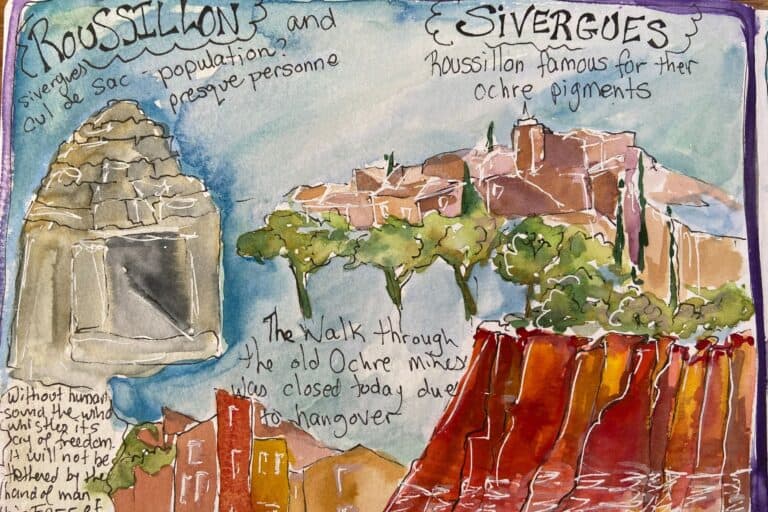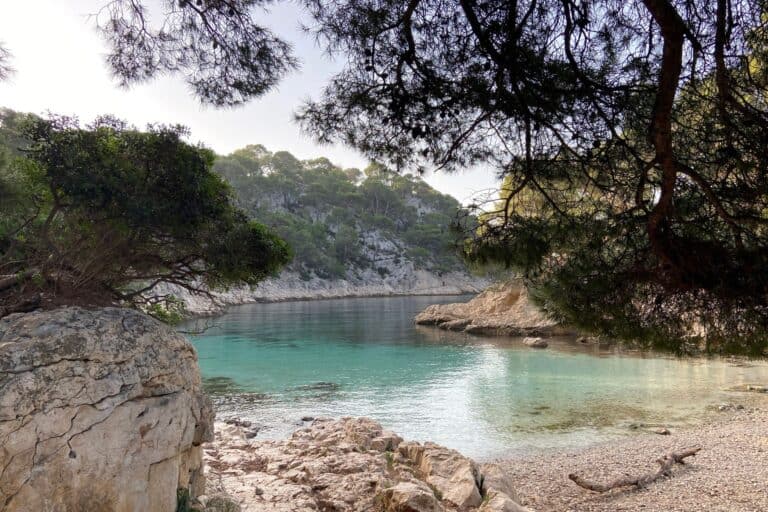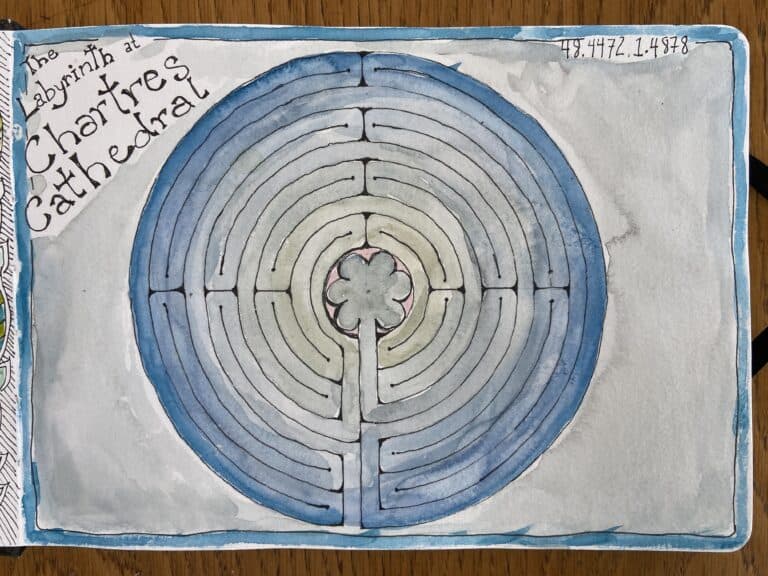Leg 6:Côte du Rhône
For as long as I can remember, my husband has been talking about Côte du Rhône wines. While you may think of them as on the lower end of the scale of good French wine, you’d be wrong. Before moving to France, sure, I knew that there was Bordeaux and Burgundy wines but I didn’t really get it. So, in a nutshell, here is my take on French wine.
Most wines in France are blends of varying grapes. When I go to the liquor store in Canada, I usually look for a varietal. Tonight I want a Sauvignon Blanc. No, tonight I’m getting a cabernet sauvignon because I’m having steak, and so on.
In France, when you say that, you’re usually looking for a really cheap table wine and if you bring a 3€ bottle of vin de table to a nice dinner party, you’ll not probably be invited back.
What is a Bordeaux wine?
Bordeaux wines consist of a blend of cabernet sauvignon, merlot, cabernet franc, petit verdot, malbec and sometimes a carménère. In order to be called a Bordeaux a wine must have a certain combination of these grapes; not necessarily all of them, but there be rules ya gotta follow or you get horsewhipped by the labelling authorities. Bordeaux is in the southwest of France.
If you open a really good bottle of Bordeaux and don’t finish it in one sitting (hahaha, as if), it may even be better the next day.
Bourgogne wines or Burgundy are made of pinot noir and gamay for the reds and chardonnay and aligoté for the whites. These wines are kind of expensive so I don’t generally drink them, but the ones I’ve tasted are unreal. This region is in the east-central portion of France.
If you open a bottle of Burgundy, you need to drink it the same night as it won’t be good the next day. Don’t cork it and put it in the fridge. Just drink the darn thing and be done with it. Ok, if you have one of those fancy things that shoots gas into the bottle to evacuate all the air, then give it a shot and let me know if those things actually work.

Back to our journey…
After leaving Gap, we headed south and entered a ring-shaped mountain range called Les Dentelles de Montmirail. On the slopes of this volcanic terrain, you will find some amazing wines. We drove down through spectacular valleys and entered the town of Beaumes de Venise, heading straight for the wine cooperative.

A wine cooperative is a place where several wineries sell their wines. You could visit the individual wineries, but this saves a bit of time and they allow you to taste however many wines you want. It’s a well run, professional place and we bought several wines. Still, they’re pricey and what we were really hoping for was some local, 3-liter sized boxed wine for the van.
Unfortunately, they only sold boxed wine of 5 and 10 liters each, which was too much for us. If you’re travelling with a few people, and plan on going to wine country, save some of your old wine bottles and then buy a bigger box you can share with someone else. Alas, the problem with boxed wine is if you don’t really like it, you’re stuck with 10 liters of it. We opted for three bottles.
The Côte du Rhône region consists of Beaumes de Venise, Vacqueyras, Gigondas and Côte du Rhône. Châteauneuf-du-pape is also part of this region but we didn’t go there.
There are many more grape varietals produced in the region but you’ll often see Grenache and Syrah and Mourvèdre each with specific percentages required to be called a certain wine.
Gigondas

After visiting the cooperative we drove past Vacqueyras and into the town of Gigondas where we had a quick look around and then headed for a camping-on-the-farm vineyard nearby.
At the farm, the host gave us a nice tasting of his wines, we bought a single bottle and then quickly ducked into the camper to avoid his new aggressive puppy with a cone around its head and hoards of famished mosquitoes.
The next day we decided to hike up to the summit of Les Dentelles de Montmirail, which is a stunning and slightly scary climb. Les dentelles means lace and the resulting rocks were just like it. Full of holes and nasties one could easily fall through. I’m glad I had my hiking poles as descending the rocky path is dangerous for my stupid hip, which likes to kind of pop out of joint when, say, I’m hiking down a rocky slope.

Still, it was a gorgeous day, and seeing the valley stretch out before me made me realize why people grow grapes here. It’s volcanic soil and sloping hills are perfect for growing grapes. Whenever I’m up on some cliff, or hill, overlooking a great distance, I can’t help but wonder what ancient humans thought about when they visited the same place.
We ended up back in Gigondas after the hard hike and not for a glass of wine. A difficult hike deserve a cold beer at the end and we gratefully sank into some metal chairs and thirstily gulped back a refreshing adult beverage.
Behind us was a local wine shop, so after our beer we trooped inside to ogle the gorgeous bottles of Gigondas.
A gaggle of well-coiffed, linen sporting blond American women, and their chino and blue dress shirt clad husbands were loudly sipping and proclaiming how similar these wines were to their preferred wines in California. Who knows? Maybe they are similar. I don’t know enough about American wine to say.
What delighted me was the fact that the young man behind the counter did know everything about every wine in the shop. He knew what slope the grapes were grown on, who grew them, how many hectares of land the owner has, how it was different from the wine across the road. He was astonishingly knowledgeable, polite and I simply could not resist buying a sumptuous wine as a gift for some friends we were going to see in a few days.
After trying nearly every wine possible, the six Americans just flippantly declared they were going to take a little look around and would be back. Of course they didn’t go back as I saw them later at another wine shop doing exactly the same thing. In some ways I think they should do what they do in Canada and charge people 5 Euros for a tasting, redeemable if they buy wine after all the effort.
We quickly retreated from Gigondas before heading to an entirely different winery further away. We parked in a vineyard but never ended up seeing the owner. I woke up smelling cigarette smoke at 5 am as the owner prowled around the camper.
She was a bit gruff when we did get up, asking why we hadn’t called in advance. While we had intended on tasting her wines and perhaps buying a bottle or two, she was nowhere to be found, so off we went to the little town of Roussillon.
And if any of you happen to be painters out there, Roussillon is famous for the pigment known as ochre. I wanted to see this place for myself and hopefully purchase some raw pigment so I could make my own watercolour paints where I got home. Until next time….
Bisous.






One Comment
Comments are closed.